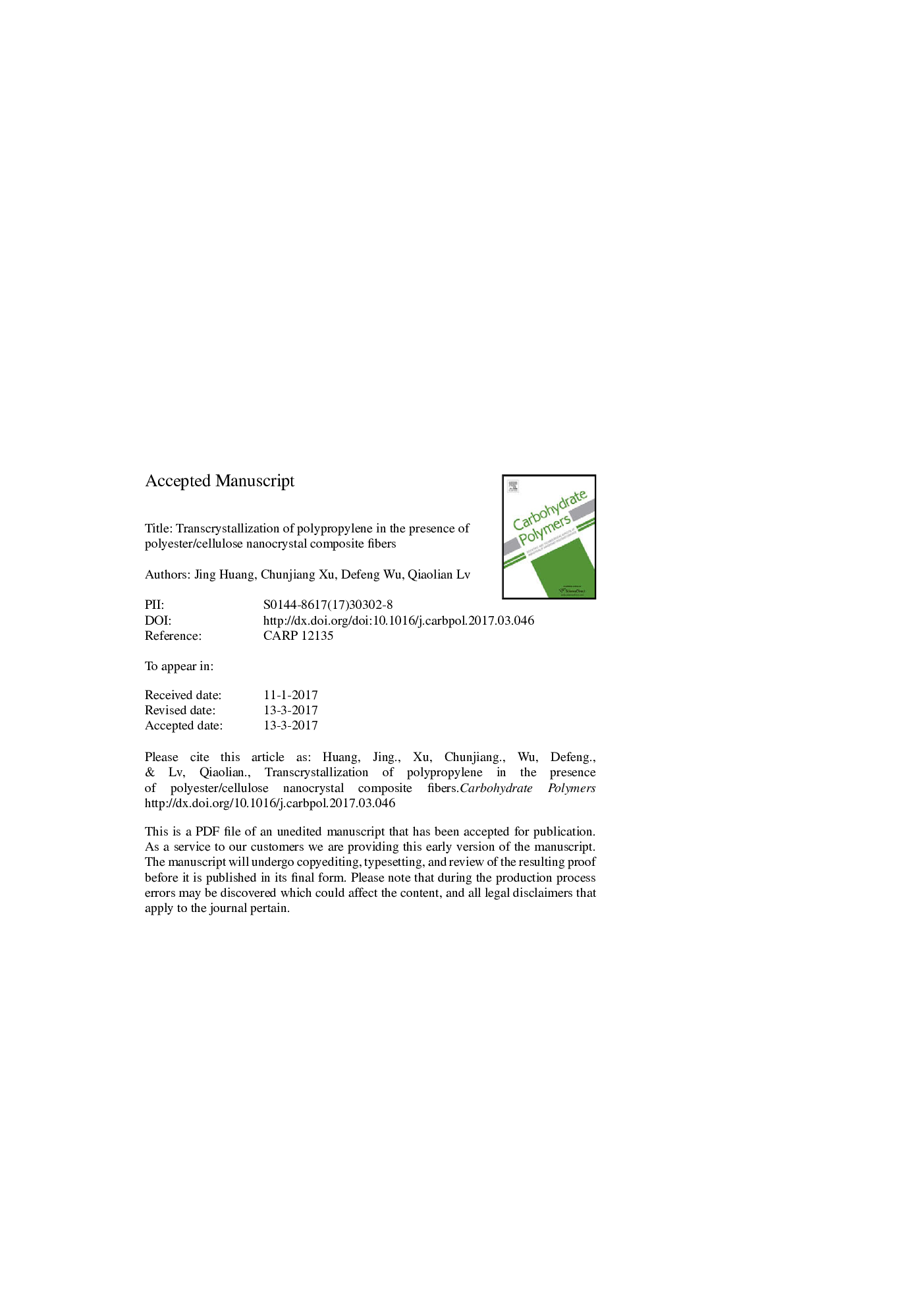| Article ID | Journal | Published Year | Pages | File Type |
|---|---|---|---|---|
| 5157685 | Carbohydrate Polymers | 2017 | 36 Pages |
Abstract
Pristine cellulose nanocrystal (CNC) and acetylated one (aCNC) were used as the modifier to change the surface properties of poly(trimethylene terephthalate) (PTT) fibers for the transcrystallization study of polypropylene (PP). The results reveal that all three kinds of fibers, including the neat PTT, PTT/CNC and PTT/aCNC ones can induce PP transcrystallization. But the PTT/aCNC fiber-filled PP system shows the most remarkable transcrystallization behavior because of the highest nucleation density of PTT/aCNC fiber. The long period and lamellar thickness of two composite fiber-filled PP systems increase as compared with the neat PTT fiber-filled one, which is caused by the reduced system undercooling and higher surface energy level of composite fibers. Accordingly, the former two systems show the lower transcrystal growth rates than the latter, which is further analyzed by the secondary nucleation theory. This work can provide useful information on the control of PP transcrystallization using the CNC-filled polyester composite fibers.
Keywords
Related Topics
Physical Sciences and Engineering
Chemistry
Organic Chemistry
Authors
Jing Huang, Chunjiang Xu, Defeng Wu, Qiaolian Lv,
